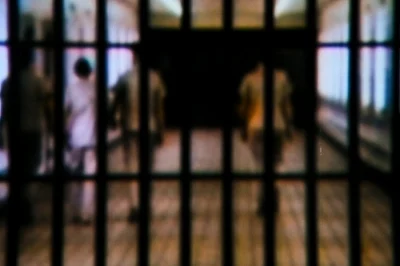A recent report published by Prayas, a field action project at Tata Institute of Social Sciences, Mumbai, reveals that during the lockdown, almost nine out of every 10 released prisoners lost their source of income, while only 12 percent could continue earning, as the economy tanked.
Due to the absence of a safety net and access to welfare schemes, most released prisoners suffered the worst wrath of the economic crisis that followed the COVID-19 lockdown.
The Rapid Assessment Study
The present finding is from a rapid assessment study conducted by Prayas, looking at persons affected by India's criminal justice system – released prisoners, families of prisoners, children in conflict with the law and their families, and women discharged from shelter homes and their families.
The purpose of the study was to assess the immediate and long-term impact of the COVID-19 crisis on their life situation and their livelihoods.
“The study was an attempt to understand the impact of the lockdown on the socio-economic conditions of Prayas clients. It aimed to understand the socio-economic background of the respondents, their family situation, living conditions, difficulties faced by them during the lockdown, accessibility to the schemes and welfare programmes announced by the government due to the lockdown and the challenges faced by them during this period.”Prayas report
The study also looked ahead and highlighted the emerging needs of these persons and their expectations from the government to help them stay afloat through this difficult period.
A total of 503 persons were interviewed between 1 May 2020 and 28 July 2020.
The Unique Struggles of Women
The access to continuous employment and stable income for women was already significantly lesser compared to that of men, before the lockdown. The imposition of the lockdown aggravated that divide, by pushing a vast majority of women out of the workforce.
“One of the women respondents, the wife of a prisoner, used to live on the pavement outside a suburban railway station. Her children had been admitted to institutions as per their age. During the lockdown, she was not being allowed to stay on the pavement by the authorities and was struggling for food and shelter till she was provided shelter by an NGO.”Prayas report
The loss of jobs forced women to turn to loans to make ends meet. The report shows that among 17 percent of respondents who borrowed money during the lockdown from money lenders, 69 percent were women.
This clearly indicates the risks involved for the women respondents who might be driven to destitution, sexual exploitation, or illegal activities, due to economic pressures.
Significant Fall in Living Standards
The experiences of the respondents in the study reveal how that section of society fares. A section that has historically struggled to make a decent living due to the absence of safety nets and inadequate access to welfare schemes.
However, their struggles were aggravated manifold by the lockdown. Many struggled to meet even the basic needs of their families, with 87 percent saying they required support for their ration needs. Moreover, online education, which is the new medium of instruction in most schools, was not accessible to many of these children.
The report further highlights that the lockdown magnified the anxiety of those who had a member of their family in prison due to the stoppage of mulakat or meetings in prisons and special homes at the time. This period also saw delays in trials, which added to the stress faced by these families. Many reported difficulties in meeting legal expenses after a drop in their incomes.
The poor rate of support and employment, coupled with rising financial and psychological crises, suggests that released prisoners are at risk of falling back into the cycle of crime or victimisation.
How to Mitigate the Crisis
The report suggests that one way of addressing the deplorable condition of those who are struggling to reintegrate into society after completing their sentence is providing support in terms of skill training, monetary assistance for self-employment opportunities, and subsistence kits.
“Collaborative efforts between government agencies and civil society can go a long way in meeting the challenges that a crisis creates while ensuring that people are not forced into destitution, exploitation or crime.”Prayas report
